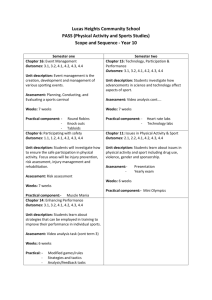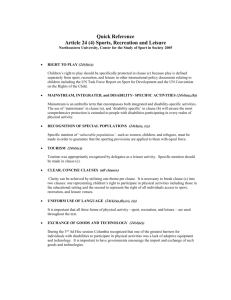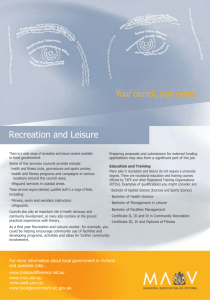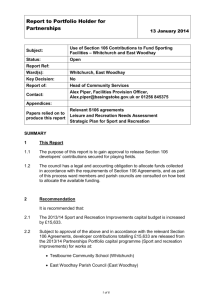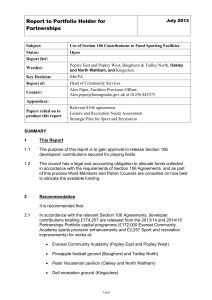The Council`s adopted SPG Developer Contributions Towards
advertisement
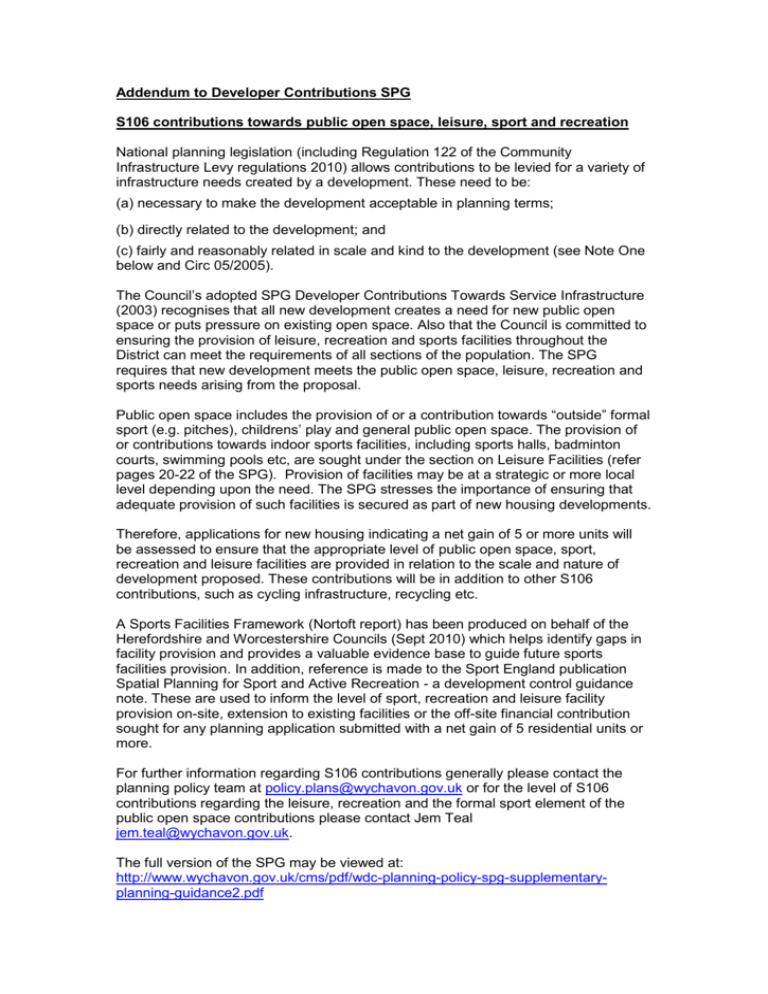
Addendum to Developer Contributions SPG S106 contributions towards public open space, leisure, sport and recreation National planning legislation (including Regulation 122 of the Community Infrastructure Levy regulations 2010) allows contributions to be levied for a variety of infrastructure needs created by a development. These need to be: (a) necessary to make the development acceptable in planning terms; (b) directly related to the development; and (c) fairly and reasonably related in scale and kind to the development (see Note One below and Circ 05/2005). The Council’s adopted SPG Developer Contributions Towards Service Infrastructure (2003) recognises that all new development creates a need for new public open space or puts pressure on existing open space. Also that the Council is committed to ensuring the provision of leisure, recreation and sports facilities throughout the District can meet the requirements of all sections of the population. The SPG requires that new development meets the public open space, leisure, recreation and sports needs arising from the proposal. Public open space includes the provision of or a contribution towards “outside” formal sport (e.g. pitches), childrens’ play and general public open space. The provision of or contributions towards indoor sports facilities, including sports halls, badminton courts, swimming pools etc, are sought under the section on Leisure Facilities (refer pages 20-22 of the SPG). Provision of facilities may be at a strategic or more local level depending upon the need. The SPG stresses the importance of ensuring that adequate provision of such facilities is secured as part of new housing developments. Therefore, applications for new housing indicating a net gain of 5 or more units will be assessed to ensure that the appropriate level of public open space, sport, recreation and leisure facilities are provided in relation to the scale and nature of development proposed. These contributions will be in addition to other S106 contributions, such as cycling infrastructure, recycling etc. A Sports Facilities Framework (Nortoft report) has been produced on behalf of the Herefordshire and Worcestershire Councils (Sept 2010) which helps identify gaps in facility provision and provides a valuable evidence base to guide future sports facilities provision. In addition, reference is made to the Sport England publication Spatial Planning for Sport and Active Recreation - a development control guidance note. These are used to inform the level of sport, recreation and leisure facility provision on-site, extension to existing facilities or the off-site financial contribution sought for any planning application submitted with a net gain of 5 residential units or more. For further information regarding S106 contributions generally please contact the planning policy team at policy.plans@wychavon.gov.uk or for the level of S106 contributions regarding the leisure, recreation and the formal sport element of the public open space contributions please contact Jem Teal jem.teal@wychavon.gov.uk. The full version of the SPG may be viewed at: http://www.wychavon.gov.uk/cms/pdf/wdc-planning-policy-spg-supplementaryplanning-guidance2.pdf It is anticipated that the Community Infrastructure Levy (CIL) will eventually replace S106 contributions. Please refer: http://www.legislation.gov.uk/ukdsi/2010/9780111492390/contents Note One: The national planning legislation includes the following re S106 contributions: Limitation on use of planning obligations 122.—(1) This regulation applies where a relevant determination is made which results in planning permission being granted for development. (2) A planning obligation may only constitute a reason for granting planning permission for the development if the obligation is— (a) necessary to make the development acceptable in planning terms; (b) directly related to the development; and (c) fairly and reasonably related in scale and kind to the development. (3) In this regulation— “planning obligation” means a planning obligation under section 106 of TCPA 1990 and includes a proposed planning obligation; and “relevant determination” means a determination made on or after 6th April 2010— (a) under section 70, 76A or 77 of TCPA 1990(1) of an application for planning permission which is not an application to which section 73 of TCPA 1990 applies; or (b) under section 79 of TCPA 1990(2) of an appeal where the application which gives rise to the appeal is not one to which section 73 of TCPA 1990 applies. .
